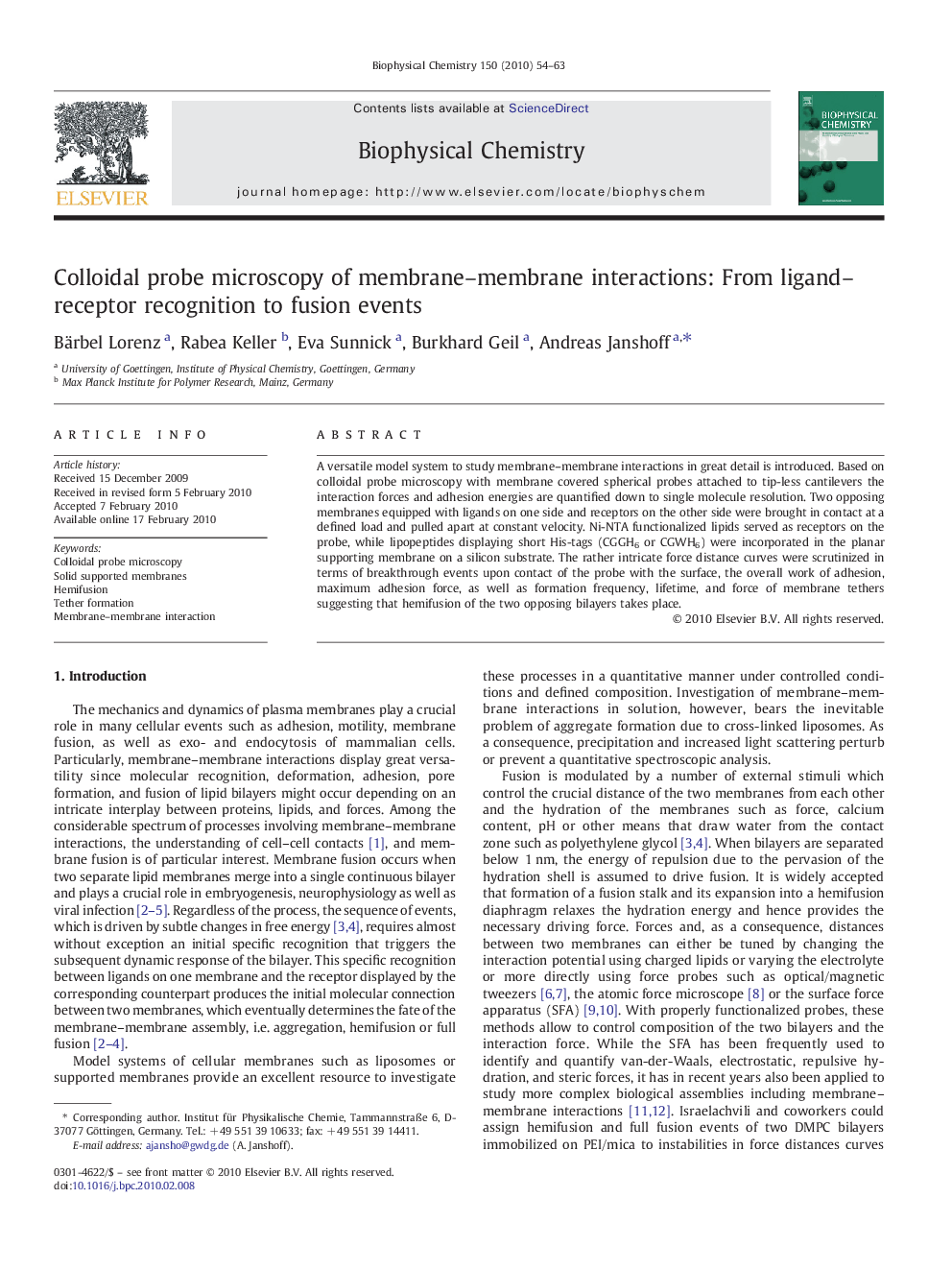| Article ID | Journal | Published Year | Pages | File Type |
|---|---|---|---|---|
| 5371370 | Biophysical Chemistry | 2010 | 10 Pages |
A versatile model system to study membrane-membrane interactions in great detail is introduced. Based on colloidal probe microscopy with membrane covered spherical probes attached to tip-less cantilevers the interaction forces and adhesion energies are quantified down to single molecule resolution. Two opposing membranes equipped with ligands on one side and receptors on the other side were brought in contact at a defined load and pulled apart at constant velocity. Ni-NTA functionalized lipids served as receptors on the probe, while lipopeptides displaying short His-tags (CGGH6 or CGWH6) were incorporated in the planar supporting membrane on a silicon substrate. The rather intricate force distance curves were scrutinized in terms of breakthrough events upon contact of the probe with the surface, the overall work of adhesion, maximum adhesion force, as well as formation frequency, lifetime, and force of membrane tethers suggesting that hemifusion of the two opposing bilayers takes place.
